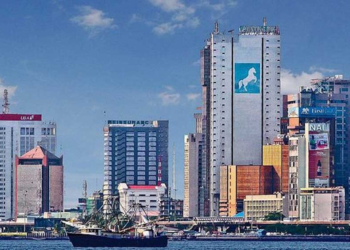Currency markets worldwide are currently experiencing a deep freeze, with traders and investors eagerly anticipating global interest rate cuts and the closely-fought U.S. election as potential catalysts to thaw the market’s stagnation.
Historical and expected volatility measures, which gauge the extent of price movements within a given timeframe, have dwindled in recent months. This decline is attributed to major central banks maintaining their current monetary policies, leading to a lack of divergent moves between regional bond yields that currency traders typically rely on for profits.
Deutsche Bank’s implied currency volatility gauge, a widely-tracked indicator, is currently hovering near its lowest levels in two years, closely resembling pre-pandemic levels. This lack of volatility has left FX traders yearning for meaningful shifts in market dynamics.
Andreas Koenig, head of global FX at Amundi, Europe’s largest asset manager, remarked, “The music isn’t playing in FX so far this year. U.S. (bond market) rates go up and down, but the others all follow, and therefore we have no change in differentials.”
Analysts highlight the significance of two key factors expected to drive future FX market movements: global interest rate cuts and the outcome of the U.S. presidential election. Central banks worldwide, including the Swiss National Bank and the Federal Reserve, are gradually indicating potential rate cuts in the near future. The closely-watched U.S. election, with Donald Trump’s policies on tariffs and trade agreements, could introduce significant volatility into currency markets.
Themos Fiotakis, global head of FX strategy at Barclays, noted the potential impact of Trump’s proposed tariffs, suggesting that they could strengthen the dollar while weakening the euro and the Chinese yuan.
Barclays predicts that a victory for Trump in the presidential election could lead to a 3% rally in the dollar and a significant depreciation of the euro, possibly even reaching parity with the U.S. currency.
Amidst the uncertainty surrounding global interest rates and political developments, traders are cautiously positioning themselves for potential market shifts. Although current market conditions limit trading opportunities, certain rate moves have begun to generate pockets of volatility, particularly in response to central bank actions.
For now, traders remain vigilant, closely monitoring central bank decisions, political developments, and any signs of market shifts that could break the current currency market stagnation.
As the world awaits pivotal events such as global rate cuts and the U.S. election, currency markets stand poised for potential upheaval, offering both risks and opportunities for traders navigating the current landscape.











